The magic of developing a relationship with your kitchen
Just dancing a tango with my sourdough starter over here
For the past week I’ve been locked in a head-to-head battle with my sourdough starter.
Let me rephrase that: for the past week, I’ve been engaged in an animated back-and-forth discourse with my sourdough starter.
That sounds better, doesn’t it? And it’s probably more accurate, too. As a very, very newbie sourdough baker, I haven’t had time yet to learn how to incorporate the multi-day process of taking sourdough from starter to finished loaf into my normal kitchen routines and overall daily rhythms. And, it turns out, sourdough starter is unpredictable. How quickly and abundantly it rises is impacted by everything from humidity and temperature to the natural yeasts in the air in our individual homes.
So for days my new starter and I have been locked in a complicated dance: when it was ready to go, I was not always prepared to devote hours to the rest of the process; when I had the time available, my starter was sadly sinking in its jar and needed to be revived.
On Tuesday evening, everything finally fell into place. My starter was active and happy and I knew I’d be home all Wednesday morning and afternoon to take the dough through the entire process. So I jumped in the deep end with the highest of hopes.
Well. In the end, I did end up with an edible loaf of bread that boasted, to my palate anyway, a wonderfully complex and tangy sourdough flavor. But the texture was all wrong: dense, gummy, flat.
We ate it anyway. And, despite its imperfections, I quite enjoyed it. Eric seemed to like it, too, (or knew better than to say differently.) And the chickens loved the (extremely hard) bread heels, soaked in a little water.
Yesterday my starter and I started dancing again - and this time it went more smoothly from the get-go. I’ve memorized a few of the steps, and have at least a basic idea of what’s coming up next; I was able to ask Jenna, my sister-in-law and sourdough mentor, some direct questions that helped me get the answers I needed at a couple of crucial junctures - something I didn’t have the knowledge or language to do even one week ago. And my confidence has grown a tiny bit—I at least know that I was able to make something edible last time—which means I’ve been able to relax a smidge and stop compulsively reading and re-reading the recipe I’m following.
I’m finding myself able to lean a little more into my instinctive understanding of how a bread dough should look and behave, and to realize that the reason all the recipes I read are different is because the circumstances in every kitchen are different - meaning sometimes I have to do what the dough, and not a recipe written for someone else’s kitchen, is telling me to do. My next loaf will go into the oven this morning, and whether it’s perfect or needs some work, I will have learned something in the process - and that’s worth celebrating.
It occurs to me that whenever I feel comfortable and competent in my kitchen - even if not a master of the specific skill I’m working on - it’s because I am in relationship with my kitchen and the processes and routines happening inside of it, instead of in conflict with it.
The early days of acquiring a new kitchen skill reminds me a little of the early days of any relationship: you put in a lot of time in the beginning. It’s exciting, heady, and more than a little bit confusing. Eventually you settle into a comfortable routine and can take your foot off the gas a bit…but like any relationship, it’s easier to maintain if you haven’t let the whole thing crash and burn. When life gets busy and I disconnect, it takes that much more work to re-establish the routines and rhythms that make everything tick along smoothly. And it never, never helps if I look at the processes happening inside my kitchen as either a grudging “must-do” or an out-and-out battle.
I talked about my own specific kitchen rhythms and how they help me maintain the relationship I want to with my food in this week’s episode of The Tea’s Made podcast:
Food is important, and feeding ourselves well is one of the most basic kinds of self-care. But the modern world tells us we don’t have time for this, making it sound more difficult and drudgery-filled to get a simple meal on the table than it really has to be. As a younger woman I bought in. The more I believed I didn’t have the time to give food any thought, the less thought I gave it, and grew more and more irritated by how little it gave me back.
But the minute I began developing a positive relationship with my kitchen and the food inside it, everything changed.
There’s been a lot of activity in my kitchen over the last couple of weeks, between experiments in bread, canning tomatoes, and experimenting with chevon (goat meat) recipes (meatballs last week, chili this week, and I’m planning a curry for next week.) Right now I’m enjoying some large, ambitious food projects; at other times I need a more minimalist approach - but those routines and rhythms have been the things that keep me showing up and keep the relationship with my food strong.
I’d love to hear about your relationship with your kitchen. Solid or struggling? Leave a comment and we’ll talk about it.
In my cup:
Confession time: my tea game has been a little off lately. I ran out of my usual go-to breakfast tea a month or so ago and have been drinking my usual Sunday morning blend (a tea from Light of Day, a biodynamic tea farm in northern Michigan) every day. The tea is called — appropriately — Sunday Morning - and it’s rather pricey, so I prefer to reserve it for Sundays to keep it special.
But when I ran out of “everyday tea” I had a mental block about buying more. After all, I have pounds and pounds and pounds of tea at my tea shop. But said shop is hundreds of miles away in the Upper Peninsula of Michigan, and just knowing it’s up there doesn’t really put the English Breakfast in my cup on a typical Tuesday at home, yannow?
It reminds me a little of the shoemaker’s wife going barefoot, only it’s the tea shop owner going tea-less…
Anyway, this week an easy solution presented itself: a local-ish tea room where I’ve had afternoon tea a few times now also does a candlelight Friday evening prix fixe dinner. Eric and I went the other night, and in addition to sharing a delicious dinner (beef burgundy, or boeuf Bourguignon if you’re fancy) with a tea pairing, we picked up a couple new teas to bring home.
One was the Tesla, pictured here in my cup - a tart and fruit-forward black tea that is also decaf, meaning I can enjoy it after 2 PM, hallelujah! - and a Chinese Keemun English Breakfast blend, which will be my everyday morning tea for a while.
Have you tasted any really good teas lately? Do share!
In my hands:
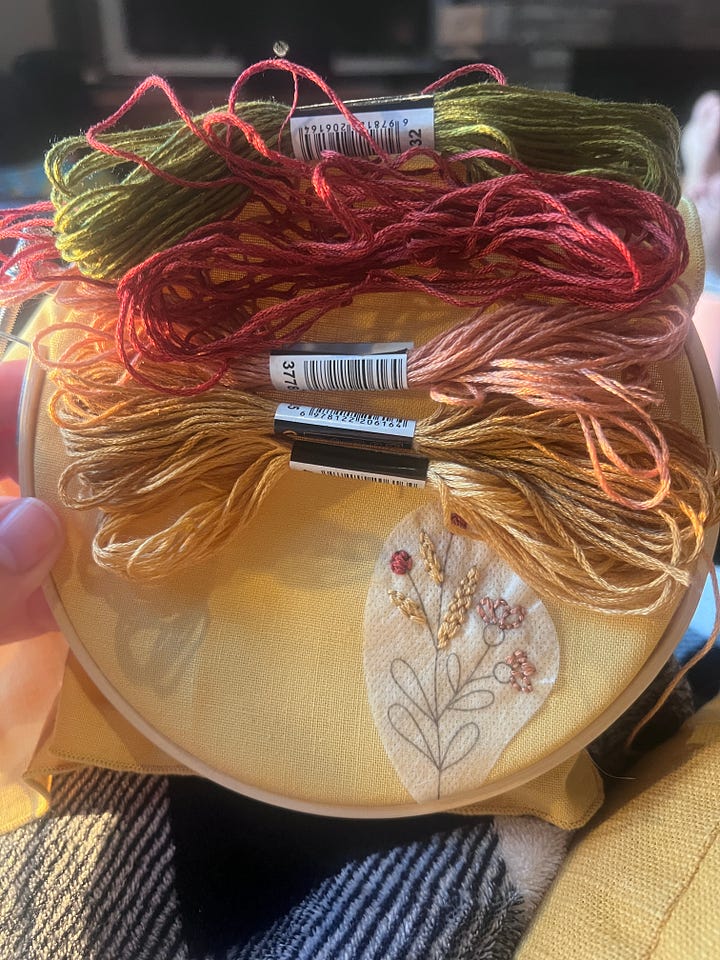
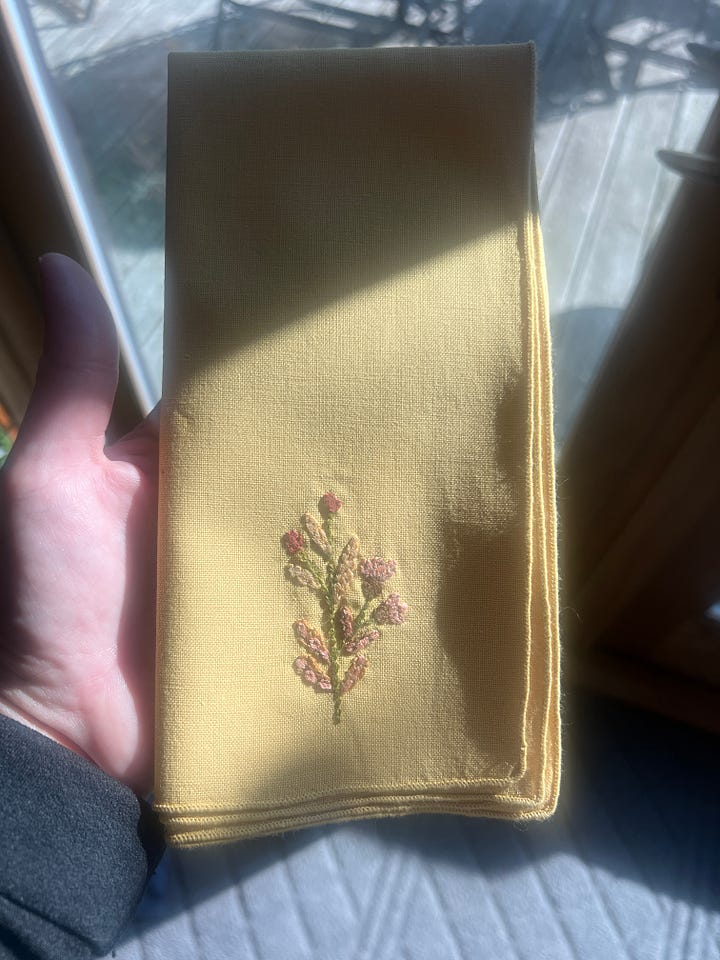
After the fun I had with my embroidered cardinal, I decided to turn to the small stack of cloth napkins I picked up at a vintage shop last year. They’d been rattling around in my embroidery basket along with some stick-and-stitch patterns in various florals and I wanted to put each to use! I decided that a fall-inspired palette would look really pretty on this golden fabric, and got to stitching.
This napkin probably took me 3 hours tops to finish, and that includes at least twenty minutes spent choosing colors, plus washing away the adhesive after I was done stitching (super easy) and then ironing in some nice sharp creases. Now on to the next.
On my book stack:
After devouring the BBC miniseries programs (ahem, sorry, programmes) Victorian Farm, Edwardian Farm, Wartime Farm, and Tudor Monastery Farm, each featuring historian Ruth Goodman, I was delighted to find this book in my local library:
If you, like me, are fascinated by learning more about how normal people really lived during specific periods in the past, I think you’ll love How To Be A Tudor. Goodman covers the day-to-day form and function of everything from clothing and work to household objects and food. I am completely engrossed and have hard a hard time putting this one down, and her book How To Be A Victorian: A Dawn-to-Dusk Guide To Victorian Life is on my must-read list next.
By the way, I have included both Amazon and Bookshop.org links above - but I’m always grateful when people buy their books through local indie shops, or at Bookshop.org, where each purchase benefits book stores!
All right friends, that’s all for this week. I would love to hear what’s on your mind, in your hands, or on your book stack this week. What relationships, routines, or rhythms are you nurturing now? Leave a comment and let me know about it.
Warmly,
Meagan


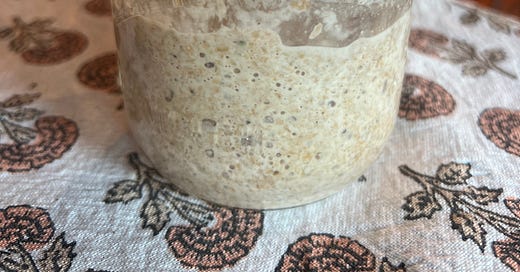



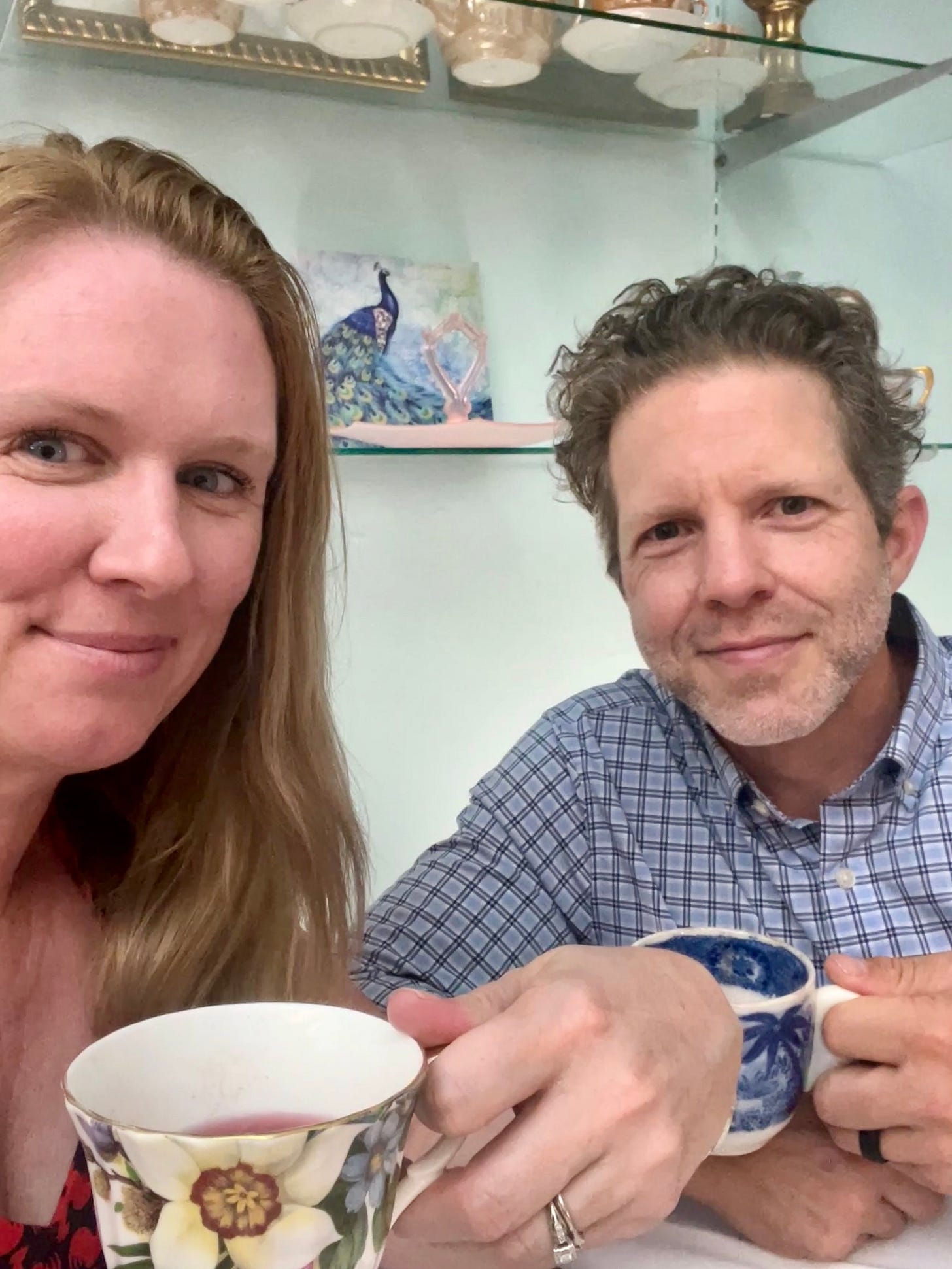
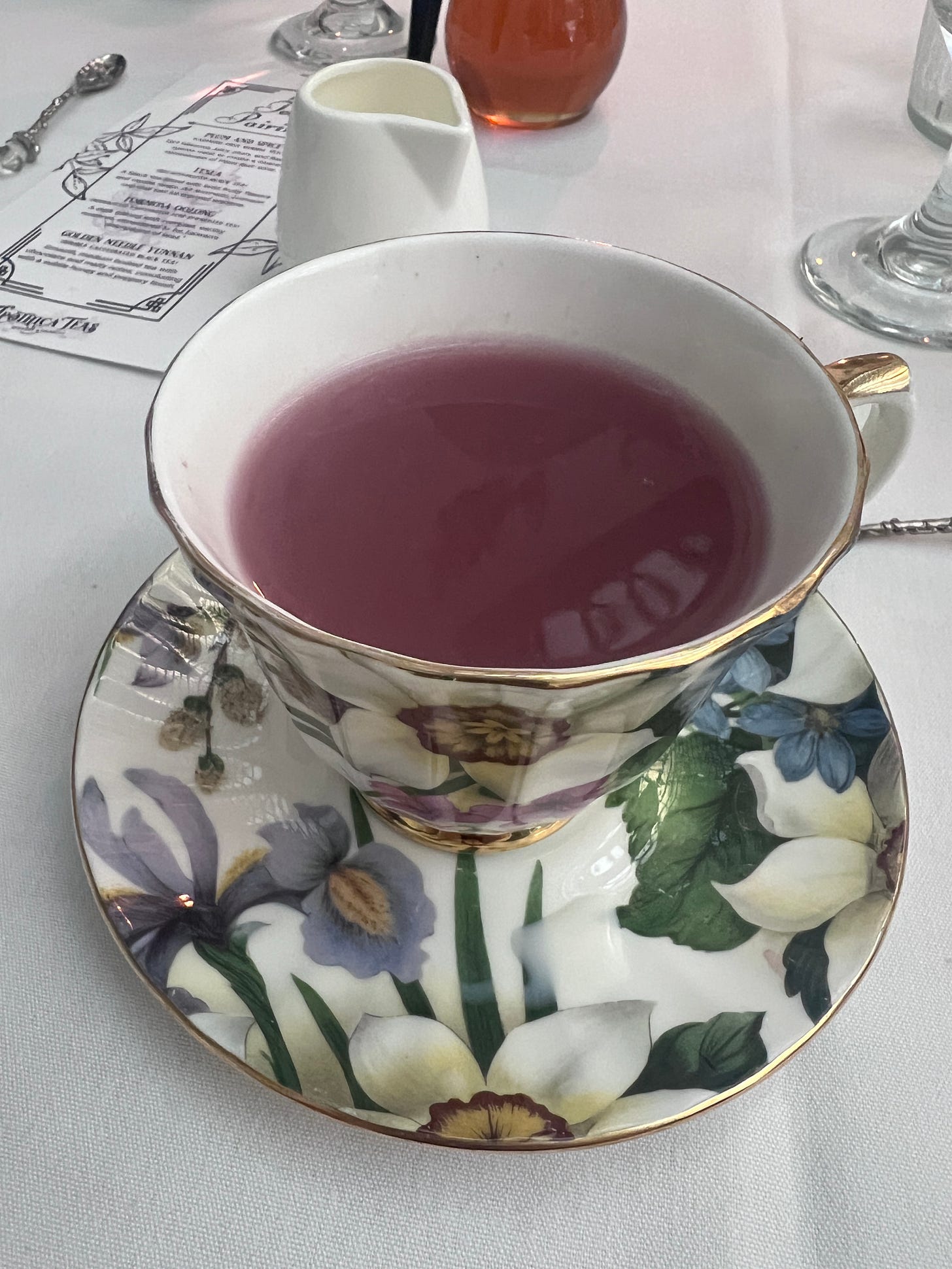

This was such a thoughtful and inspiring read. Developing personal rituals truly brings a sense of grounding and purpose to everyday life. I appreciate the perspective on finding magic in simple moments and creating consistency. Looking forward to more insights and reflections in your future posts.
The biggest thing I started doing a couple years into my sourdough journey that made my end product so much better was to do the second rise as a long, slow rise in the refrigerator overnight at least 12 hours. And in fact, you could leave it in there 18 hours and it would be fine. And that also kind of takes the pressure off of timing. You can stretch this process out for days. (Also, I know people who bake sourdough bread with their starter at any point in the rise or fall, and it basically comes out fine. I haven’t tried that myself. I do feed my starter and try to make the dough when it’s at its most risen.) second favorite thing: make extra starter, so you can make sourdough starter pancakes. They’re the best. Here’s the recipe I use. https://sugargeekshow.com/recipe/sourdough-discard-pancakes/